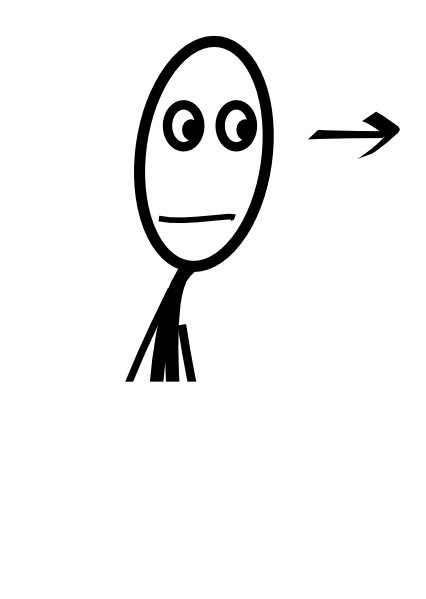Hai, kawan-kawan..posting yang satu ini dah lama jadi draf jadi saya pun da ingat-ingat lupa. Tapi lupa nak update and post in blog. Tadi saya google dan jumpa link ini yang menceritakan dengan lebih lengkap apa yang saya mahu sampaikan.
Have you ever noticed eye movements?
Have you ever noticed that people's eyes move in different directions when being asked a question?
Research results showed that there is a connection between the thinking process of a person and the direction that his eyes moves to. The six possible directions that the eye could go to are upper right ,upper left, middle right , middle left , lower right and lower left .
Each direction represents a different function that takes place inside the mind.
The following is an explanation of the different eye movements and their respective meanings (Note that the following directions are describing the eye positions of someone who is facing you):
NLP, eye accessing cues
- Upper left ,visual construction (VC) : The person looking into that direction is constructing the image of a visual scene. The person's eye could go to this direction when he is asked about the color of his dream car
- Upper right , visual remembering (VR) : The person looking into that direction is remembering the image of a visual scene. That's the direction someone could look at when he is asked about the color of his car
- Middle left, auditory construction (AC) : The person looking into that direction is constructing a sound . That's the direction the person's eye could go to when asked a question like "what do you think joe will tell you when you meet him tomorrow ?"
- middle Right , auditory remembering (AR) : The person looking into that direction is remembering a sound. That's the direction the person's eye could go to when asked a question like "how was your manager's voice like yesterday?"
- Lower left Kinesthetic (k) : This is the direction someone's eye go to when he is accessing his feelings. That's the direction a person's eyes could go to when asked something like "how did it feel to fail that exam?"
- Lower right ,auditory digital (AD) : This is the direction someone's eye go to when he talks to himself.
Maya's comment: When you are reading, and u want to memorize it, adjust your reading material upper left to your eye (VC). When you are reading the Holy Quran, put it on your lower right, so it goes directly to your heart.. :)
Eye accessing cues and liar detection
These concepts can be very useful in knowing whether someone is telling the truth or whether he is lying.
For example, Asking someone about the color of his car should let his eyes move to the upper right (visual remembering ). If his eye went to the direction of visual construction instead then he may be constructing images instead of remembering them and the truth may be that he does not have a car at all.
The same goes when you ask someone about a conversation that happened the day before. If he looked to the AR direction then this shows that he is remembering the conversation while if he looked at the AC direction then this may mean that he is lying .
CAUTION: note that using such a method for detecting whether someone is lying or not is very risky. There are some things you should be aware of before you use such a method for lying detection. below is a list of guidelines you should stick to if you are going to use this method for "liar detection" so that you don't find that everyone around you is a liar!!:
CAUTION: note that using such a method for detecting whether someone is lying or not is very risky. There are some things you should be aware of before you use such a method for lying detection. below is a list of guidelines you should stick to if you are going to use this method for "liar detection" so that you don't find that everyone around you is a liar!!:
- Some people have these six directions reversed!. If you are not sure of the directions he uses then you can ask him a test question (that you know its answer) just to record his eye directions. By doing so you will know the direction he uses for remembering and the other direction he uses for construction. You could then ask him the other question you want to know about and notice if his eyes will go in a different direction than the one it went to when you asked him the first question.
- if the the person was trying to remember something that recently happened then his eyes may not go to any direction and could just stay in the middle. This happens because the event is still in his short term memory
- Some people tend to remember by focusing and refocusing without moving their eyes to any directions, you cant do anything in that case. Fortunately those people are rare
- The mind is a superior device with hundreds of thoughts going in and out at the same time. Many thoughts could run into the mind in one second and so the eyes may move into any direction depending on any of these thoughts and thus give you false clues. Beware of this fact while questioning someone
Maya's comment: Give it a try..hehe..


2 comments:
nak try interrogates orang dulu :p
hehe..baca sampai abes tau. sebab ada beberapa pengecualian..
Post a Comment